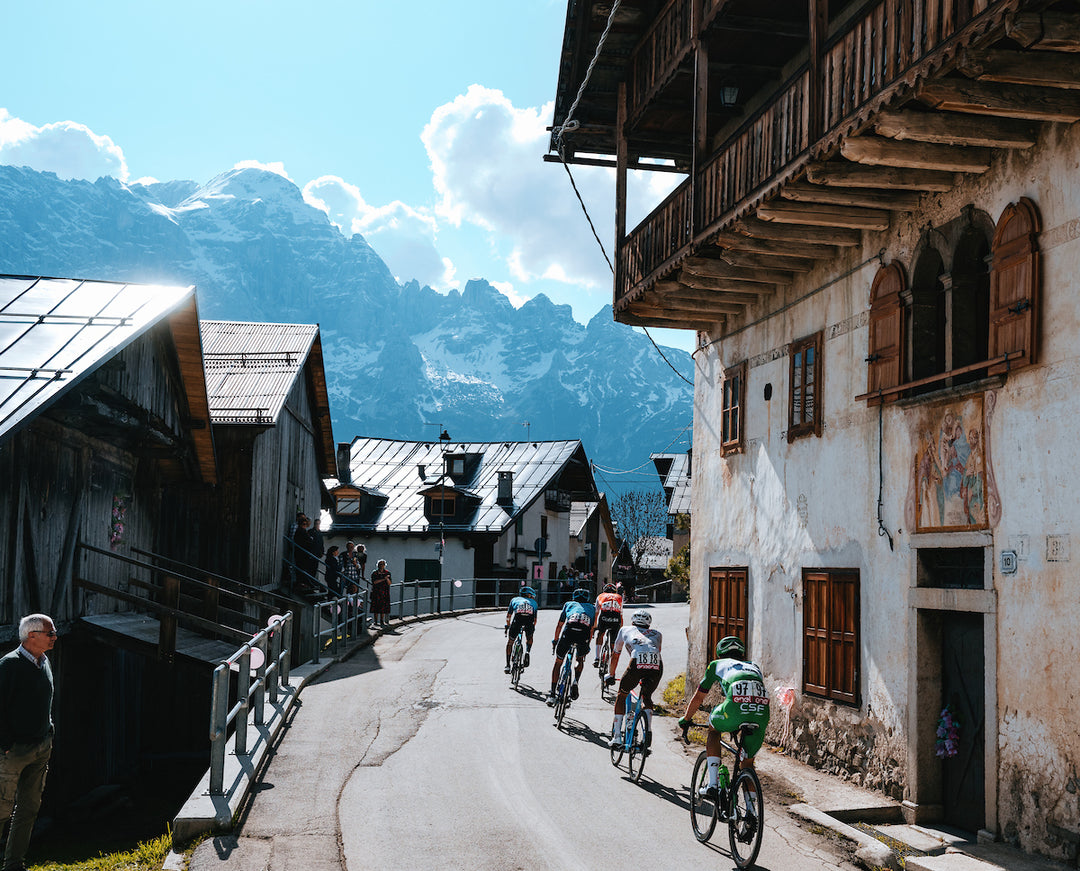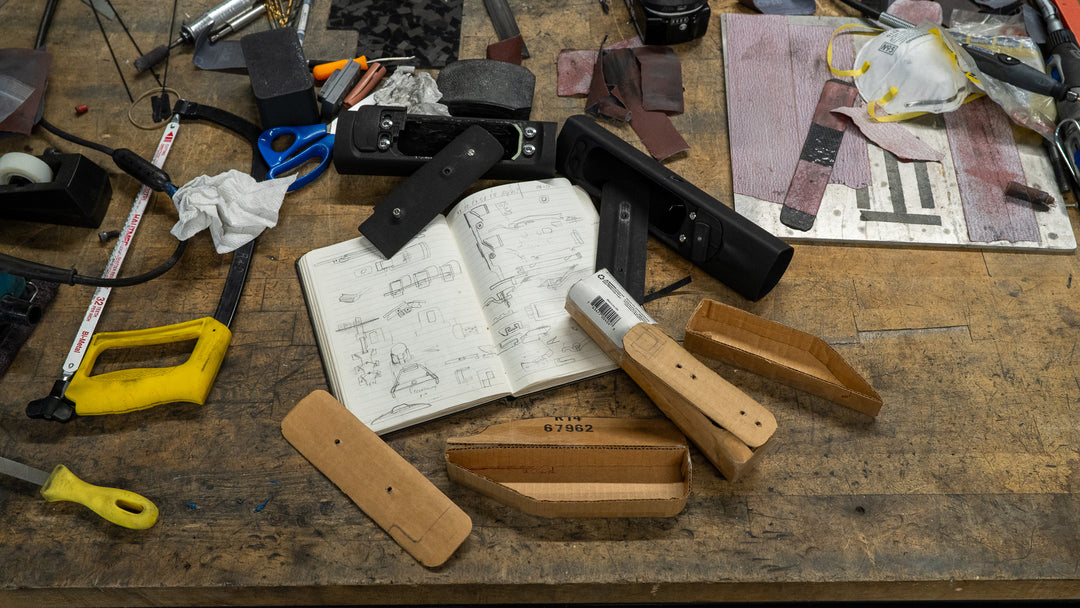BUILDER PROFILE: MOOTS, THE ART OF AN EVOLVING CLASSIC
Titanium is not a particularly rare material. Odds are you’re titanium adjacent right now. As the ninth-most abundant element on earth it’s found in everything from cell phones to white paint, and, much like paint, it takes an artist to bring a seemingly ordinary medium to life.
History: Small Town, A Mountain of Possibility
Moots has been manufacturing bike frames by hand in Steamboat Springs, Colorado for the last forty years, thirty of which have been dedicated solely to the shaping, welding, and finishing of titanium. Founded by Kent Eriksen in 1981, Moots began as an in-house frame building operation in Eriksen’s Sore Saddle Cyclery, which operated out of the iconic (or eyesore depending on who you ask) cone-shaped headquarters that Eriksen repurposed from town’s incinerator/sawmill. Outfitted with an employee fresh from Bruce Gordon’s frame building school, Eriksen followed the European model of ‘local bike shop as cycling brand’ and set to work crafting handmade frames. “In ‘81 it was steel. Titanium hadn’t really hit the bike industry yet, so Moots actually manufactured in steel from 1981 until 1991,” explains Brand Manager Jon Cariveau. “The very first bike that rolled out under Kent was a road bike; that was the passion of the time and the first

Evolution: Beyond the Steel
The move to titanium was ultimately necessitated by the popularity of Eriksen’s YBB softail mountain bike. “If you take a paperclip and flex it back and forth it will eventually break,” Cariveau analogizes. Moots was searching for a material that could outlast steel in high-stress and repetitive motion applications. When titanium first became readily available to bike builders around 1991 Moots was quick to go all in, selling off their steel inventory almost overnight and opting for the fatigue resistance, reduced weight, and durability that titanium is now famous for; not to mention its smooth and silky ride quality.
Raw Material: Cite Your Sources
Not all titanium is created equally. The foundation for every Moots frame begins with a commitment to quality materials. “We source the best material we can get our hands-on,” Cariveau is quick to point out. As a raw material, titanium is available from dozens of sources around the world but Moots sources almost exclusively from two mills in the United States and Reynolds in the United Kingdom. When asked about the samples they receive on a regular basis he chuckles, gently explaining that “the overseas sources aren’t held to the same quality standards… if you start using material that’s not straight, round, or consistent you end up with a bike that’s the shape of a banana.” This is why Moots relies on aerospace-grade titanium tubing that’s certified to extremely strict tolerances because nobody wants to fly on an airplane that’s shaped like a banana. “It’s more expensive, but it’s the right way to do things and we’re unwilling to waiver on that,” reiterates Jon, who understands that using cheaper materials and cutting costs will only hurt the brand in the long run.




Craftsmanship: Handmade Perfection
Twelve to fourteen hours; that’s how long it takes the artisans at Moots to turn a stack of titanium tubing into a finished frame. The process of working with titanium is notoriously difficult and Moots is one of the most regarded in the industry. Famous for their welds and exacting tolerances, it’s easy to admire the handmade perfection that they strive to pack into every frame box they ship, but what a customer doesn’t see under that famous “stack of dime” welds is just as important Jon explains, “if we can strip away the welds and show customers the tightness of the tube fitting before we even put any weld on it, it’s amazing.” Moots also utilizes a double pass weld in which the tubes are melted together on the first pass without filler and then finished with the welding wire. This process doubles the amount of time it takes to weld a frame but is critical to the strength and finish of the final product. And what do customers expect when they buy a Moots? “When that frame comes out of the frame box it should be absolutely flawless, or as flawless as handmade can be. The fit, the finish… the headset goes in perfectly, the bottom bracket threads perfectly, the rear wheel sits in perfectly square and in alignment. We expect it for ourselves here and that’s what our customers expect.” This ability to achieve a consistently flawless product by hand is a company hallmark that is rare to find these days. “When you buy a BMW you don’t go ‘wow, I know the guy who installed the motor,’” Jon jokes, “but at Moots, you have a chance to meet the person who built the bike.”
A Modern Classic: Evolving Within the Industry
Moots customers have grown accustomed to being patient as they wait for a new frame often stretches from three to over six months. Part of the appeal of buying a handmade frame is the scarcity, and like each rider, every bike has subtle nuances that differentiate it from a factory-produced model. Moots’ wait times have increased a bit in the last year and Cariveau attributes that not to supply chain and production delays but to the strength of their current lineup. “Moots is positioned in the titanium world right now with an amazing lineup of bikes” across every discipline from gravel, to mountain, to road, “I’ve been with the company coming up on 25 years and I’ve never seen the lineup as dialed as it is right now,” notes Jon. And, while their frame material stays unchanged, their ability to adapt and evolve keeps them at the forefront of the industry; from easily accommodating modern wireless component groups to constantly evolving with industry standards from thru-axles and bottom brackets to head tubes and wider tires; Moots is able to remain classic without becoming antiquated. With hundreds of years of combined riding and manufacturing experience under one roof, Caraveau acknowledges that ultimately “the staff is going to pull the history along with our future” as feels great confidence in the brand’s longevity.



The Future: Down the Trail
After forty years of handcrafting frames and enjoying the recognition and customer satisfaction that come with that, what’s next for Moots? Caraveau sees sustainability as a guiding principle moving forward. “There’s a younger generation of bike riders that are paying attention to the environment than we were twenty years ago looking to participate in the sport without further damaging the environment.” The amount of raw materials and energy that go into manufacturing and shipping bikes and components is staggering and it’s Jon’s desire to see his customers enjoying a lifetime of riding on their Moots. “The great thing about building titanium bikes is that we know they will last longer than most anything out there.” In fact, one of his biggest joys is when a customer stops by the factory to show off their old Moots. Sometimes it’s the original owner but often it’s a family member that’s received it decades later and still uses it on a regular basis; most recently it was a seventy-year-old on a steel Mountaineer that he’d gotten as a Christmas present…in 1986.
Moots + ENVE
Jon had a chance to tour the ENVE facilities at Builder Round-Up and was struck with the similarities when it came to approaching and philosophy noting that “the properties they operate on at ENVE align with Moots so well; best base materials, best processes, and they’re right on the cusp of an always innovative move… just like the double pass weld analogy I’m sure there are cheaper and easier ways for





